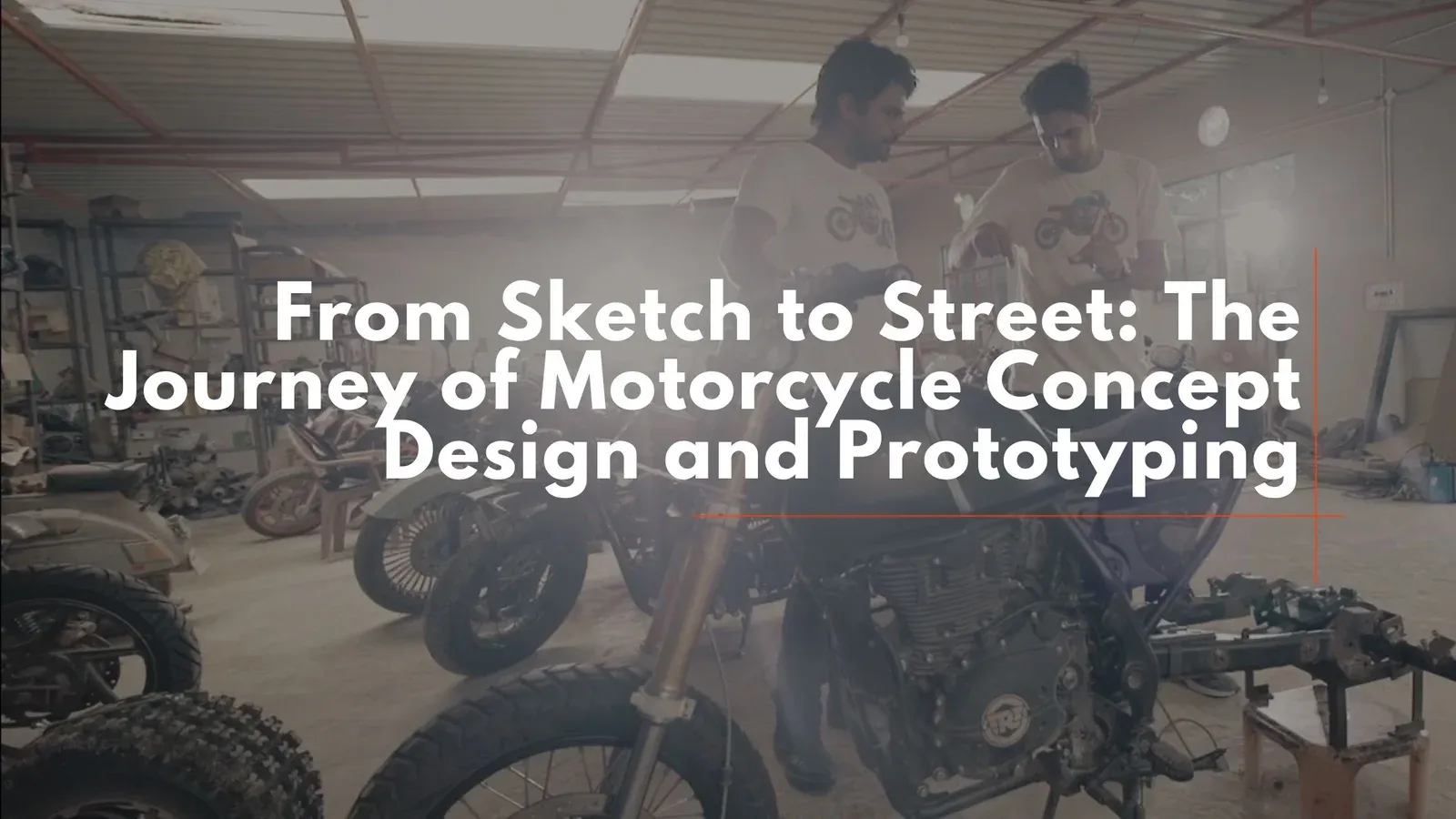Motorbikes, with their blend of power, agility, and freedom, have always fascinated enthusiasts and designers alike. The journey from a mere sketch on paper to a roaring machine on the streets is a remarkable process, blending art, science, and engineering. This journey of motorbike concept design and prototyping is not just about creating a mode of transport; it’s about crafting an experience. In this blog, we’ll explore the intricate journey of automotive concept development and motorbike concept prototyping, highlighting the nuances of creating custom motorbikes.
The Genesis: Sketching the Concept
Every custom motorbike starts with a vision, an idea that sparks the imagination. Designers begin with sketches, often rough and raw, capturing the essence of the bike. This initial phase of automotive concept development is crucial. It’s where the magic happens, where abstract ideas take a tangible form.
Sketching is more than just drawing; it’s about visualizing the proportions, the stance, and the overall feel of the motorbike. Designers consider various elements such as the frame geometry, wheelbase, seat height, and overall silhouette. The goal is to create a design that is not only aesthetically pleasing but also functional and ergonomically sound.
Refining the Design: Digital Rendering and CAD Models

Once the initial sketches are finalized, the next step is to convert these sketches into digital renderings. This is where technology meets creativity. Using advanced software, designers create detailed digital models of the motorbike. These models allow for a more precise visualization of the bike from every angle.
Computer-aided design (CAD) software plays a pivotal role in this phase of automotive concept development. CAD models provide a detailed blueprint of the motorbike, including the dimensions, materials, and mechanical components. This stage allows designers to experiment with different designs, materials, and colors, ensuring every aspect of the motorbike is perfect before moving to the prototyping phase.
The Heart of the Machine: Engine and Mechanical Components
While the design is being refined, parallel efforts are made to develop the engine and other mechanical components. The engine is the heart of any motorbike, and its design and performance are critical. Engineers work meticulously to ensure the engine not only fits within the design constraints but also delivers the desired performance.
Custom motorbikes often feature bespoke engines, tailored to meet specific performance criteria. Whether it’s a high-revving sportbike engine or a torque-rich cruiser engine, the development process involves extensive testing and refinement. Engineers use simulation tools to predict the performance and identify potential issues, ensuring the engine is reliable and efficient.
Motorcycle Prototyping: Bringing the Concept to Life
With the design and mechanical components ready, the next step in the journey is motorcycle concept prototyping. Motorcycle prototyping is where the virtual becomes physical, where designers and engineers get to see and touch the actual motorbike for the first time.
Prototyping involves creating a physical model of the motorbike using various materials. This phase is critical for identifying and addressing any issues that may not have been apparent in the digital models. It allows for real-world testing and validation of the design, ensuring everything fits and functions as intended.

For custom motorbikes, this phase often involves a lot of handcrafting and artisanal work. Skilled craftsmen work meticulously to create the frame, bodywork, and other components, ensuring every detail is perfect. This level of craftsmanship is what sets custom motorcycles apart, giving them a unique character and personality.
Testing and Validation: Ensuring Performance and Safety
Once the prototype is ready, it undergoes rigorous testing and validation. This phase is crucial for ensuring the motorbike performs as expected and meets all safety standards. Testing involves putting the motorbike through various real-world scenarios, including different riding conditions, terrains, and environments.
Engineers and test riders work together to evaluate the performance, handling, and comfort of the motorbike. Any issues or shortcomings identified during testing are addressed, and the prototype is refined further. This iterative process ensures the final product is not only visually stunning but also mechanically sound and safe.
Finalizing the Design: From Prototype to Production
After extensive testing and validation, the final design is ready for production. For custom motorbikes, this often means creating a limited number of units, each hand-built to perfection. The production process involves sourcing high-quality materials, precise fabrication, and meticulous assembly.
Every custom motorbike is a work of art, a testament to the skill and dedication of the designers and craftsmen involved. The final product is not just a mode of transport; it’s a unique creation that embodies the vision and passion of its creators.
The Journey Continues: From Street to Legend
The journey from sketch to street is a remarkable process, but it’s only the beginning for a custom motorbike. Once on the road, these machines continue to evolve, often becoming legends in their own right. Owners personalize and modify their bikes, adding their touch and creating a bond with the machine.
Motorbike concept design and prototyping is a fascinating journey that combines creativity, engineering, and craftsmanship. It’s about pushing the boundaries of what’s possible, creating machines that are not only functional but also beautiful and inspiring. Custom motorbikes, with their unique designs and bespoke features, are the epitome of this journey, representing the pinnacle of automotive concept development and motorbike concept prototyping.
As technology advances and new materials and techniques emerge, the future of motorbike design and prototyping looks promising. The journey from sketch to street will continue to evolve, bringing new and exciting possibilities for designers, engineers, and enthusiasts alike. The road ahead is full of potential, and the journey of creating the perfect motorbike is an adventure that will never end.
